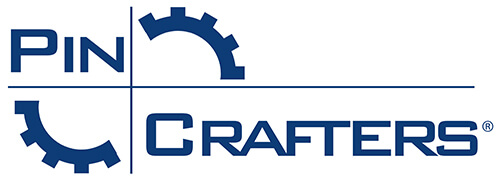Understanding Pin Attachments
Pins and emblems can be attached and displayed in various ways depending on the usage and personal preference. Our pricing includes a standard military clutch or safety pin back but we also offer additional attachments to enhance your emblem. When selecting a pin backing, consider the frequency of use, mounting surface material, repositioning needs, and emblem weight. Contact us to determine the best backing choice for your specific application. Premium backings ensure comfortable wearability and protection for your custom emblem. Below are some of the most popular pin backings and attachments.
Clutch Attachments
Clutch attachments are likely the most commonly used pinbacks. They consist of a thin vertical metal piece with a wider horizontal piece at the bottom that acts as a clasp to secure the pin to clothing or bags. Clutches provide a simple but secure way to display pins.
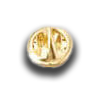
Military Clutch
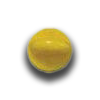
Gold Rubber Clutch
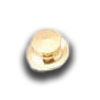
Flat Head Clutch
Tie Tacks and Bars
Tie tack accessories display custom lapel pins stylishly and functionally. Tie chains and bars provide secure fastening and embellishment, allowing prominent emblem adornment on any tie or scarf accessory. They are ideal options for formal or business uses where visibility is key.
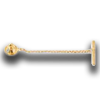
Tie Tack Chain
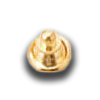
Deluxe Tie Tack
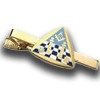
Tie Bar
Pin Backs
Safety pin backs function similarly to standard safety pins, allowing you to securely attach your pin without risk of the sharp point coming undone. Stick pins have a simple straight pin back where the pointed end sticks through fabric or corkboards for display. Like safety pins, stick pins enable secure mounting without a closure that could detach.
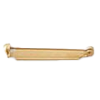
Safety Pin
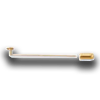
Stick Pin
Magnet Backs
Magnet backs are a versatile backing choice as they can temporarily adhere without poking holes or damaging display surfaces, while still providing reliable security. Magnet pin backs are ideal for situations that require easy repositioning without damaging the mounting material.
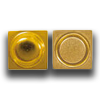
Magnet Back
Frequently Asked Questions
What is the difference between military clutches, gold rubber clutches, and flat head clutches?
A military clutch is the standard no-frills functional backing. It has a thin metal vertical piece with a flat horizontal clasp that simply grabs fabric to secure the pin. Military clutches work for most applications, especially pins displayed occasionally or temporarily.
Rubber clutches provide an easy and secure way to fasten pins. The soft rubber backing simply pushes into the pin’s needlepoint to attach or remove. This allows smooth putting on and taking off compared to metal clasps. Rubber clutches are great for comfortable wearability directly against skin, unlike harder metal backings.
A flat head clutch is a low-profile back option designed with a flat head disc, providing a discreet and secure attachment for pins and badges. Its spring-loaded design ensures a tight grip on fabric, contributing to a clean and streamlined appearance, making it a popular choice for lapel pins and badges where aesthetics and a flush profile are essential.
What is the difference between tie tack chains, deluxe tie tacks, and tie bars?
A tie tack chain connects a lapel pin to a small horizontal bar that slides under the tie to keep the emblem neatly fastened in place. The decorative chain linking the lapel pin to the tie tack creates a sophisticated, upscale aesthetic.
A deluxe tie tack features a horizontal bar for sliding under the tie to fasten, but without a decorative chain. This provides a clean, professional tie tack for functionally exhibiting lapel pins.
A tie bar consists of an extended horizontal backing that stretches the full width of the tie. This securely fastens oversized lapel pins or clusters prominently across the front of the tie. The tie bar transforms the tie into a display board for customized pins and emblems for business and formal events needing high visibility.
What are some common uses for a magnet back?
- Refrigerator magnets – Magnet backs allow pins and emblems to be displayed on refrigerators, metal lockers, and other magnetic surfaces for frequently changing decorative flair without damage.
- Temporary display – The convenient on/off stickability of magnet backs makes them ideal for temporary pin displays at trade shows, conferences, and sales booths where pins need to be securely showcased but easily removed and stored at the end of the day.
- Children’s accessories – For kids pins and badges, magnets provide secure holding power but easier fastening and removal compared to clutches for small fingers.
- Display boards – Magnetic pin backs allow secure positioning on metal display or presentation boards while also permitting rearrangement of content.
- Crafts – In crafting projects, magnet backed pins can add decorative pops of color and embellishment to metal boards, tins, vases, and more.
What is the difference between a safety pin back and stick pin back?
Common uses of safety pin backs include attaching pins, badges, or brooches to clothing, bags, or other fabric surfaces. The spring-loaded clasp provides a secure grip, helping to prevent the pin from easily falling off. Safety pin backs are popular for their simplicity, ease of use, and effectiveness in keeping accessories securely in place on various fabrics.
A stick pin back refers to a type of fastening mechanism used for pins, brooches, or similar accessories. It typically consists of a straight pin with a decorative or functional element on one end and a cap or stopper on the other end. Stick pin backs are often chosen for their decorative qualities and are commonly used with items such as brooches, lapel pins, or ornamental pins. They provide a more elegant and traditional way to attach accessories to clothing, offering a distinctive and stylish appearance. Stick pins were historically popular in formal wear, including securing ties or scarves, and they continue to be used for both functional and ornamental purposes in contemporary fashion.
